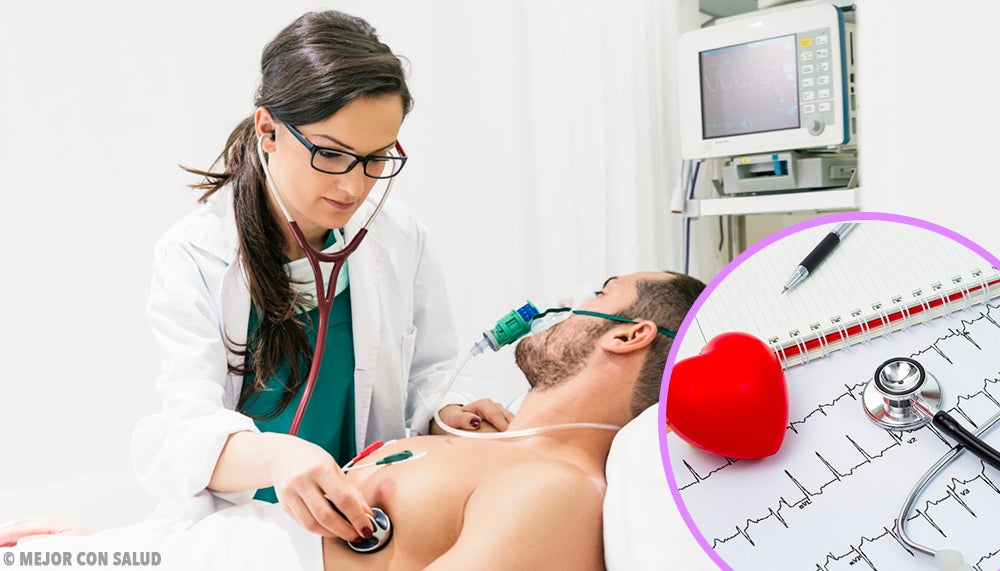Sildenafil: Indications, Contraindications And Side Effects

Sildenafil is a drug that belongs to the family of phosphodiesterase inhibitors. It is used mainly in erectile dysfunction.

Sildenafil is a widely used drug today in various treatments. It is also in a class of drugs called phosphodiesterase (or PDE) inhibitors. As a general rule, it is used as therapy in the following medical conditions:
- Erectile dysfunction. It also refers to the inability to get and maintain an erection to carry out effective sexual intercourse. This impotence is permanent in nature and can be a symptom of other underlying diseases.
- Pulmonary hypertension or PHT. Thus, the elevated pressure in the pulmonary vessels causes a series of symptoms in the patient. For example, chest pain, shortness of breath, feeling dizzy or fatigued, among others.
- High-altitude pulmonary edema. It is closely related to altitude sickness.
It is commonly administered in pill form (orally) but its dose must always be supervised by the medical team. Within the pharmaceutical industry it is found under the names Viagra and Revatio.
What is the mechanism of action of sildenafil?

Furthermore, this drug acts as an inhibitor of cyclic GMP-specific phosphodiesterase type 5 (or PDE5), an enzyme. In this way, the destruction of cGMP is stopped and the blood flow in the penis is reactivated.
In the case of pulmonary arterial hypertension, this chemical compound is able to relax the blood vessels. Thus, blood flow in the area is notably improved and the resulting complications are controlled.
What are the contraindications of sildenafil?
To begin with, before taking the medicine, the patient must inform the medical team about their lifestyle. For example, you should comment on the medication you take, the diseases you present, etc. In this way, the most common contraindications are the following:
- Children and young people under 18 years of age.
- Hypersensitivity or allergy to any of the components of the drug.
- Cardiovascular disorders: the most prominent in this group are arrhythmias.
- Severe hypotension.
- Visual problems.
- Renal insufficiency. In this way, the kidneys must maintain their normal functions: cleaning and regulating the components of the bloodstream.
- Liver failure. As a general rule, the liver is responsible for the clearance of drugs and other toxic substances from the blood. Therefore, it is important that the patient keep this organ in good condition.
What are the most common side effects of sildenafil?

As a general rule, when the patient agrees to take any type of medicine, there is a risk of unwanted or side effects. Thus, when the medical team decides to offer this option to the subject, they must compare all the possible effects of the compound. On the other hand, this information is usually included in the leaflet inside the drug package.
Some Side Effects of Sildenafil
- Headache or headache. It is also possible that the patient develops a migraine. Migraine is a headache of neurovascular origin that presents with throbbing pain.
- Redness or presence of intense blush in the facial area.
- Tiredness, weakness or general fatigue: these are symptoms of hypotension.
- Feeling dizzy and even syncope. Syncope is temporary loss of consciousness with immediate recovery, generally caused by peaks of postural hypotension or vasovagal symptoms. In them, the blood flow to the brain territory is generally reduced.
- Vision disorders. Usually it is an eye irritation, blurred vision, loss of peripheral vision, etc.
- Sleep disturbance. It is often insomnia or the inability to sleep.
- Pain or discomfort in the extremities. However, it usually occurs with a sensation of tingling or numbness.
- Photophobia or strong sensitivity to light.
- Dyspepsia. It is a stomach complication that causes nausea and vomiting, discomfort in this organ, burning – caused by gastric acid reflux – and flatulence. The patient reports it as heaviness and pain after meals, located in the epigastric area.
- Palpitations
- Bleeding
- Another side effect is anemia.
- Rashes.
- Currently, studies are being carried out regarding the effect in pregnant and lactating women. For now, the chemical compound has not been shown to be transmitted to the baby through breast milk.









